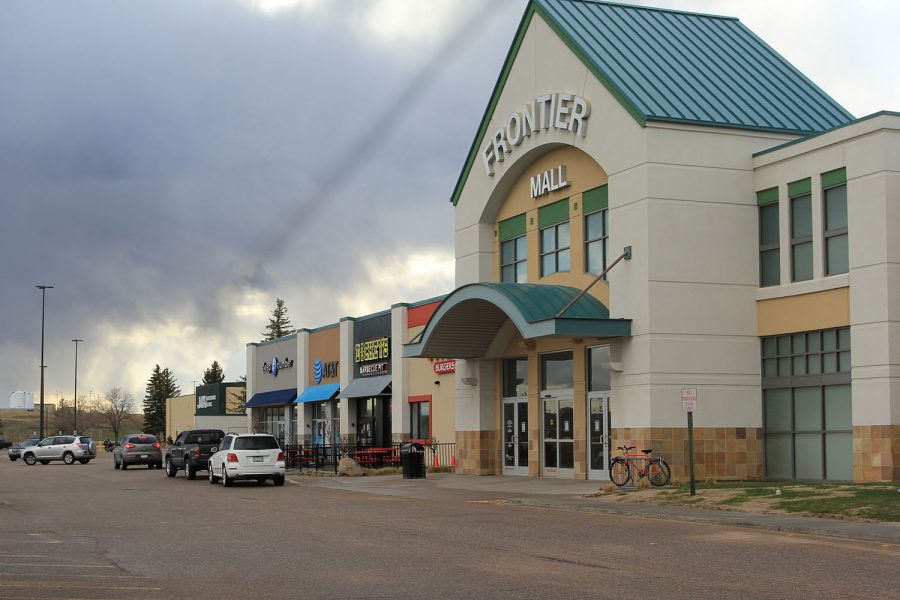Coronavirus wrecks economy, tourism, health care and lives
Customers patiently wait in their cars for curbside food service from Dickey’s BBQ at Frontier Mall. While some businesses with outside access remained open, the mall closed in mid-March to discourage people gathering in confined areas.
May 6, 2020
COVID-19, also known as the coronavirus, is having huge impacts around the world. According to www.worldometers.info/coronavirus/, as of April 23, there are more than 2.6 million cases and more than 185,000 deaths worldwide. As countries advise people to stay home more, the numbers are slowing, but they continue to rise every day.
Because China was the epicenter for the disease and, consequently, its economy nearly shut down, it greatly affected the supply of consumer goods around the globe, causing brands to search for alternatives. But as more people stay home in China, the number of cases has started to drop, and there is hope the supply chain will be restored.
The U.S. has taken a hard hit from the pandemic with more than 855,000 confirmed cases and nearly 48,000 deaths as of April 23. Most states are under a shelter-in-place order and most or all schools are shut down. Since most businesses have had to temporarily close, a lot of people are out of work right now. According to www.fortune.com, 26.5 million workers have filed jobless claims since early March. Headed into March, according to the website, there were already 7.1 million unemployed Americans. When the figures are combined, it would equal more than 33 million unemployed, as of mid-April, or a real unemployment rate of 20.6%—which would be the highest level since 1934. Some analysts believe the unemployment rate will exceed 25%.
Some of the biggest sporting events in the world have been cancelled, including the 2020 Olympics, NASCAR, March Madness, MLB, professional soccer, and marathons. Over the past two decades, the business of sports in the United States has ballooned into a chunk of the economy that generates well over $71 billion annually and employs tens of thousands of people, from superstar athletes to hot dog vendors. But all of that has ground to an abrupt halt. The financial losses climb every day, as games go unplayed and are absent from television, and entire seasons could be canceled.
The economy is expected to spiral downward as trade shows, Broadway shows, museums, concerts and other traveler-orientated events are cancelled. In hopes of preventing more spread of the virus, vast numbers of businesspeople are telling employees to stay home, cancel travel, work on-line, and practice social distancing. As the coronavirus continues its march around the world, governments have turned to proven public health measures, such as social distancing, to physically disrupt the contagion. Yet, doing so has severed the flow of goods and people, stalled economies, and is in the process of delivering a global recession.
You would think Wyoming, being so sparsely populated, would be doing great at social distancing, but It’s doing a worse job than all the other states, according to new research from a data firm, Unacast. They used an interactive map to compile data and statistics on how each state and county in the U.S. is at their social distancing practices. Wyoming turned out to be the only state in the nation with a grade of an ‘F’. When broken down by county, some did much better than others. Teton, Park, Goshen, and Washakie all received As, but most of the counties in the state, including Laramie, received an F. According to the Wyoming Department of Health, as of April 23, there were 326 confirmed cases and six deaths.
“People should have been more concerned about it because we (Laramie County) have, I believe, the highest confirmed cases in the state of Wyoming,” said senior Jesus Sanchez. “And we could’ve prevented many cases if we knew earlier.”
In response to the coronavirus threat, Wyoming Governor Mark Gordon began to close the state down in mid-March. Because of the closures of some non-essential businesses, people protested for Wyoming’s economy to reopen. A rally at the state capitol on April 20 between protesters demanding an end to restrictions on businesses in Wyoming and Gov. Mark Gordon at times turned confrontational, but it also had its civil moments with many attendees thanking Gordon.
The crowd started to gather more than an hour before the rally began at noon Monday, but there was no expectation that Gordon would come out to address the gathering or even respond to questions from the crowd.
As the governor descended the stairs of the Capitol to speak, protesters shouted at him and peppered him with questions. Gordon noted that he was still unsure when he would lift the statewide restrictions, but he assured them it was a priority in his office.
“I relied on the great people of Wyoming who I knew would do the right thing and I am looking at steps to reopen businesses and do it safely,” Gordon said. “You will see that.”
Gordon, who remained even-tempered during the rally, and pointed out he was one of the few governors to avoid enacting a stay-at-home order, something the crowd agreed with and cheered him for.
One of the biggest frustrations for LCSD1 students is the lack of places to eat. “Restaurants are only allowing drive through and people can’t go and spend their money,” said sophomore Cameron Richmond. Another common complaint is the lack of hair salons and barber services.
The closures are supposed to go on until at least until April 30, but many state officials feel it is unnecessary to have a stay at home order because many people already practice social distancing. There is discussion by state leadership to begin to reopen sometime between May 1 and May 15.



Patti Sullivan • May 24, 2020 at 8:04 pm
Well written! Great research and insight into your community experience.